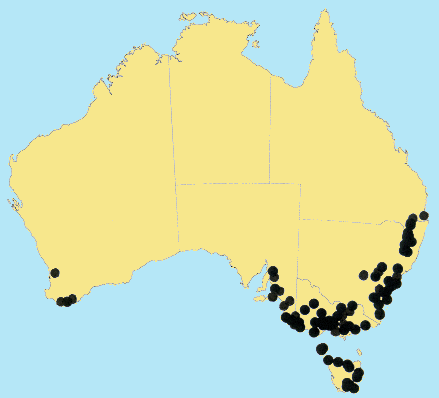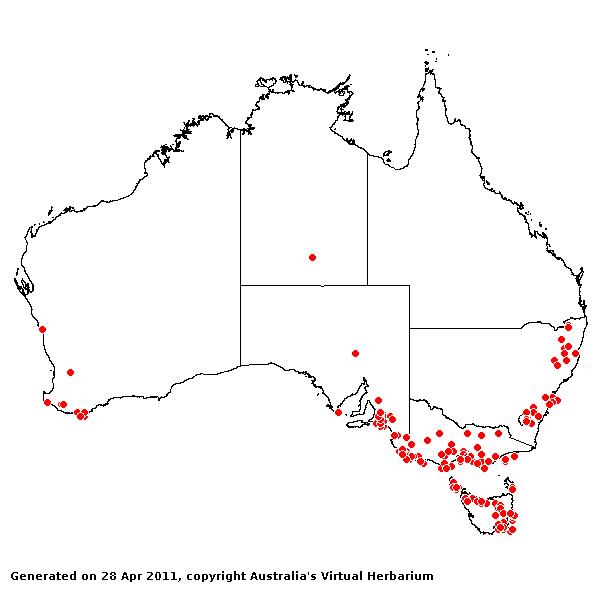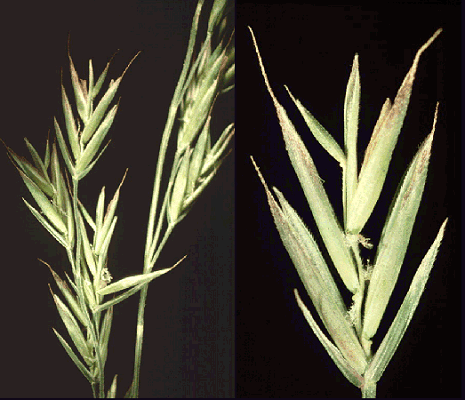Festuca arundinacea* Schreb., nom cons. Spic. Fl. Lips. 57 (1771).
Classification. (GPWG 2001) : Subfamily Pooideae. Tribe Poeae.
Type of Basionym or Protologue Information: Germany, Biniz: Schreber (M holo).
Recent synonyms: F. elatior subsp. arundinacea.
Key references (books and floras): [2002] D.Sharp & B.K.Simon, AusGrass, Grasses of Australia, [2002] J.Wheeler, N.Marchant & M.Lewington, Flora of the South West (417), [2006] J.Jessop, G.R.M.Dashorst, F.M.James, Grasses of South Australia (123), [2008] S.W.L.Jacobs, R.D.B.Walley & D.J.B.Wheeler, Grasses of New South Wales (267), [2009] A.Wilson (ed.). Flora of Australia, Vol 44A. Poaceae 2 (279).
Illustrations: [2006] J.Jessop, G.R.M.Dashorst, F.M.James, Grasses of South Australia (123, fig. 80), [2008] S.W.L.Jacobs, R.D.B.Whalley & D.J.B.Wheeler, Grasses of New South Wales, 4th edn (267), [2009]. A.Wilson (ed.), Flora of Australia 44A: Poaceae 2 (280, Fig.37).
Habit. Perennial. Culms 38–200 cm tall. Lateral branches simple. Leaf-sheaths glabrous on surface. Leaf-sheath auricles present. Ligule an eciliate membrane, 0.4–2 mm long. Leaf-blades aciculate or linear, flat or conduplicate, 9.5–60 cm long, 3–14 mm wide. Leaf-blade surface glabrous.
Inflorescence. Inflorescence compound, a panicle. Panicle lanceolate or ovate, dense or loose, 10–50 cm long.
Spikelets. Spikelets pedicelled. Fertile spikelets many flowered, with at least 2 fertile florets (3–10), comprising 3–10 fertile floret(s), with diminished florets at the apex, elliptic or oblong, laterally compressed, 7.7–18 mm long.
Glumes. Glumes dissimilar. Lower glume lanceolate, chartaceous, without keels, 1–3 -nerved. Upper glume lanceolate or oblong, 4.5–7 mm long, chartaceous, without keels, 3 -nerved.
Florets. Fertile lemma 6–9.4 mm long, without keel or keeled, 5 -nerved. Lemma apex muticous or awned, 1 -awned. Median (principal) awn subapical, 0–4.3 mm long overall. Palea 2 -nerved. Anthers 3.
Continental Distribution: Europe, Africa, Temperate Asia, Tropical Asia, Australasia, Pacific, North America, South America, and Antarctica.
Australian Distribution: Western Australia, South Australia, Queensland, New South Wales, Victoria, Tasmania.
Western Australia: Dale, Menzies, Warren. South Australia: Northern Lofty, Murray, Southern Lofty, South-eastern. Queensland: Darling Downs. New South Wales: North Coast, Central Coast, South Coast, Northern Tablelands, Central Tablelands, Southern Tablelands, Central-Western Slopes. Victoria: East Gippsland, Gippsland Plain, Midlands, Otway Plain, Otway Range, Riverina, Volcanic Plain, Wannon, Wimmera. Tasmania: King Island, North West, North East, Midlands, East Coast, Mt Wellington.
Notes. Cultivars are occasionally used for hay and fodder.
Introduced. Native to Europe and temperate Asia. Usually in open and damp sites e.g. roadsides, creeks, swampy verges and open paddocks, in regions of higher rainfall. Flowers Oct.-Apr. Fruits Dec.-Mar.





